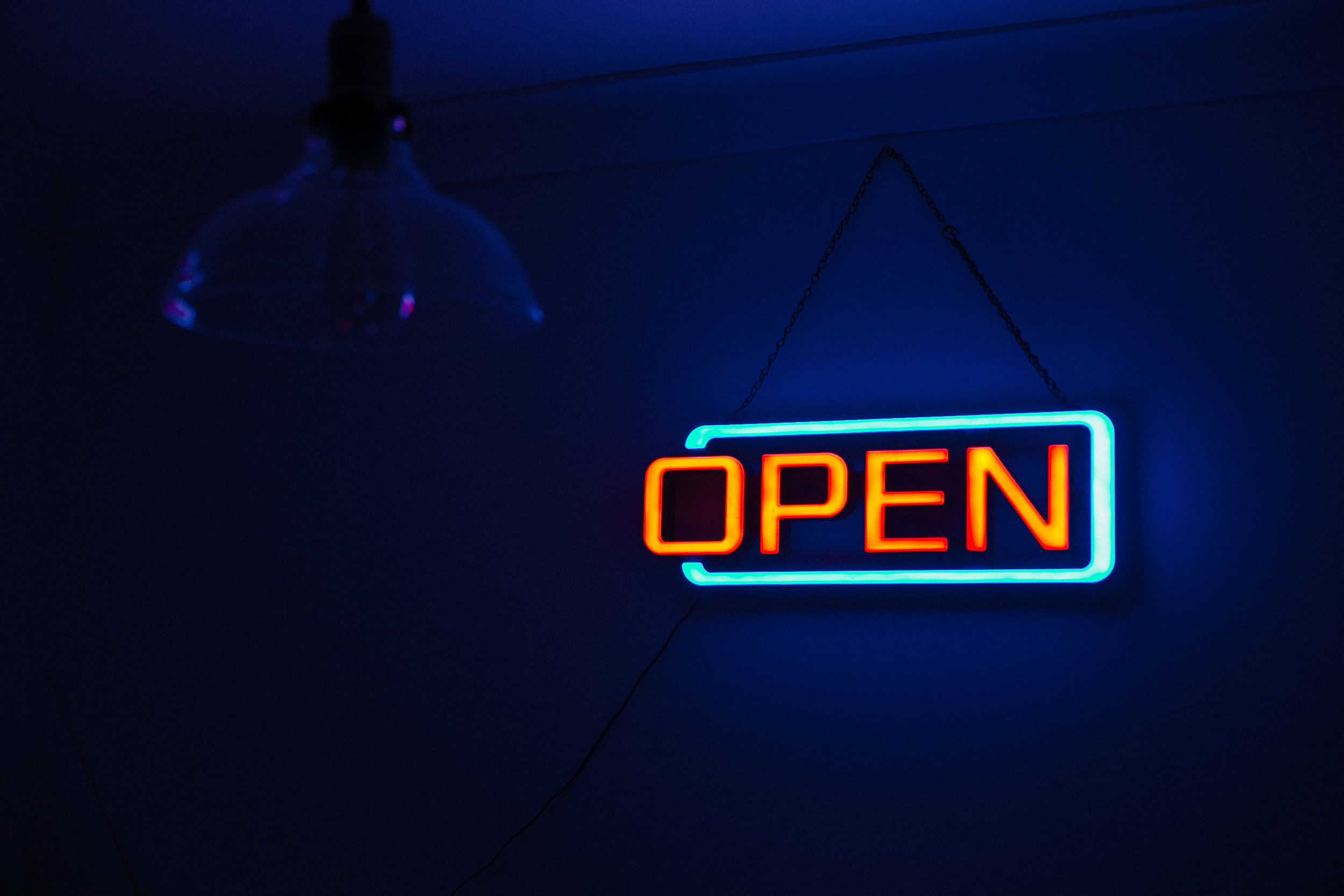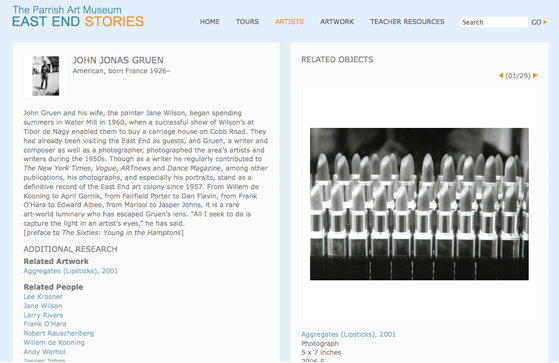Open data is an underutilized opportunity for many non-profit organizations. But how do you access it and how can it help? Contributor Gillian walks through the ins and outs of this helpful source.
Open Data and the Arts: What's Next?
How can galleries, libraries, archives and museums create long-term value with open data? Can cultural institutions become leaders for social innovation by opening data? Open data advocates argue that yes, they can, but only if they are able to translate that data into useable knowledge. AMT Lab Contributor Sarah Weber investigates.
SOPA and PIPA - Fighting online piracy or stopping innovation? Open source alternatives to common utilities.
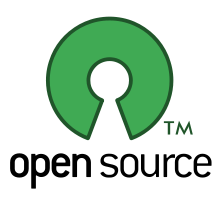 This Wednesday, 1/18/2012, Wikipedia, Reddit , and Boing Boing will go dark in protest of the Stop Online Piracy Act that is being considered in US House and the Protect Intellectual Property Act in the US Senate. These protesters are asking for the US public to call or write to their elected officials regarding the proposed legislation. Bloggers in this forum have taken a stance against limiting open source and net neutrality in the past and these two bills pose no less of a threat to the innovative culture that is open source.
This Wednesday, 1/18/2012, Wikipedia, Reddit , and Boing Boing will go dark in protest of the Stop Online Piracy Act that is being considered in US House and the Protect Intellectual Property Act in the US Senate. These protesters are asking for the US public to call or write to their elected officials regarding the proposed legislation. Bloggers in this forum have taken a stance against limiting open source and net neutrality in the past and these two bills pose no less of a threat to the innovative culture that is open source.
Although there has been a healthy open source community for decades, legislation like SOPA or PIPA would exclude open source software opportunities to developers in the US if passed. These bills would essentially lock down portions of the internet to users in the US by creating a federally kept blacklist of internet sites that internet service providers would in turn prevent from being served to their US customers. This would prevent the US public from accessing the steady stream of free content from the open source community that has been continuously redefining the online world for decades.
Open source has been the frontier of technological innovation for decades and by passing this legislation the US Congress will simply ensure that the next Facebook, Google, or Amazon simply never get off the ground from US soil. In celebration of Open Source a list has been compiled with some great open source alternatives to common commercial software packages that can be downloaded for free:
1) OpenOffice: Similar functionality to MS Suite with modules for word processing, spreadsheets, databases, presentation and drawing
2) Dia: Produces charts and flowcharts like MS Visio.
3) WordPress and Joomla: WYSIWYG web page builders that compare favorably with aspects of Adobe Dreamweaver.
4) paint.net: An image editing program with much of the some of the same functionalityof Photoshop.
5) Pidgin: A messaging aggregator, useful in communicating with all the disparate messaging programs out there.
*) Foxit: A pdf reader that won't bog down your system and won't update every six hours like Adobe Acrobat does.
Exhibiting Online with Open Source Software
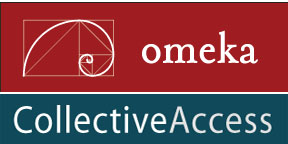 Has your organization been giving some thought to creating online components for its upcoming exhibitions? The demand for having exhibition-related content available online is not only increasing, it has grown into an expectation. Web publishing can be a costly process for many arts organizations, especially if a web developer and designer is required for each exhibition. A more cost-friendly alternative is to consider using open-source, publishing software for creating collections and exhibitions online.
Here are two currently available, free downloadable options designed specifically with cultural institutions in mind:
Has your organization been giving some thought to creating online components for its upcoming exhibitions? The demand for having exhibition-related content available online is not only increasing, it has grown into an expectation. Web publishing can be a costly process for many arts organizations, especially if a web developer and designer is required for each exhibition. A more cost-friendly alternative is to consider using open-source, publishing software for creating collections and exhibitions online.
Here are two currently available, free downloadable options designed specifically with cultural institutions in mind:
Omeka – Launched this past year, Omeka was designed by the Center for History and New Media at George Mason University. Omeka features a variety of themes and plugins while offering a management system similar to that of the blogging site Wordpress. Here is a great video tour of the software.
Collective Access – Also utilizing a management system similar to many blogging platforms, Collective Access was developed by software firm Whirl-i-Gig in 2007. Click here to demo the software.
Both sites offer links to exhibition sites built with their software, which are worth checking out to see what’s possible using these open source systems.
So what is open-source software, anyway? A software is considered open source when the firm who created the software makes the source code available to the public and opts out of certain other copyrights that are normally reserved. This means that any user can alter, customize and develop for that software as they sit fit to meet their project’s needs. An important thing to keep in mind is that in the tradition of open source software, the user must share this new, modified code with the public as well.
Before your organization goes forward with publishing an exhibition or collection online with this kind of software, there are some questions you should consider:
What is the user experience like?
No two web publishing software systems are exactly alike, so make sure to take a detailed tour before committing to one. A clean and simple user interface will drastically shorten training time for your staff and save a lot of future headaches if you pursue more complex projects. Omeka and Collective Access are both strong examples since each offers a blog-like user-interface specifically designed with cultural institutions in mind.
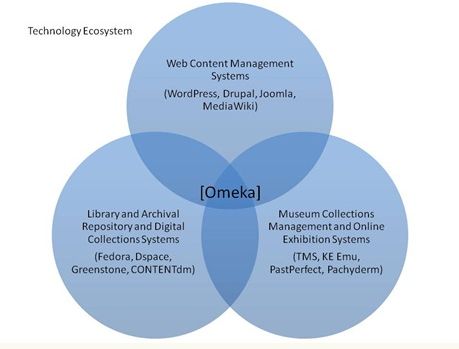
Omeka offers services that cover a wide range of needs for cultural institutions
An example of how Collective Access allows you to build relationships between items in your online collection.
How much storage will you need?
What kind of content and media will your project involve? What kind of storage and back-up will be needed? Remember that server space is essential, whether it’s your organization’s internal server, a web-hosting service’s server, or buying some space from a server provider online. In addition to their software, Omeka offers a web-hosting service with different plans priced according to number of sites and the amount of storage needed.
How easy is it to customize?
This goes back to the importance of taking a detailed demo of the software. Many of the platforms have multiple themes available to make the task of designing your organization’s site a lot easier. However, you should test the platform to determine how difficult it will be to change those themes and customize them to fit your organization’s unique brand image without requiring the help of a web designer.
What kind of support is there for the software?
When an open source software is downloaded and installed on your server, all of the support and maintenance responsibilities for that software rests with your organization. A server provider will be able to fix bugs and issues specific to your server, but maintaining the software is up to you. Omeka and Collective access offer extensive documentation and guides as well as online forums, but support and troubleshooting are left to you. This is one of the advantages to Omeka’s hosted option; they will provide service support for both server and software issues.
How is the software upgraded?
When the system you use comes out with a new version, who installs the upgrade? How easily can an upgrade in the software be installed and configured? With both Omeka and Collective Access, the users have to manually perform the upgrades, but extensive documentation and guides are provided. This is another benefit of a hosted service option like Omeka.net; they will install and configure software upgrades for you.
So while these open-source, publishing software systems are free, there are some costs to consider. Be sure to do your research in order to determine if these open source tools will meet your budgetary and technical constraints for experimenting with online collections and exhibitions.
The Future of Arts Journalism is Here... Maybe
Worried about your local arts critics being cut? How about the impending demise of your local paper? Don’t worry; the future is here! Last week the USC Annenberg School for Communication announced five projects that will present at The National Summit on Arts Journalism. The School put out an open call for projects that represent the future of arts journalism. The five winning projects will be announced at the conference on October 2 and another five made the cut to present:
- Sophie: A new authoring tool for multimedia developed by the Institute for Multimedia Literacy that suggests new possibilities for presenting critical response.
- The Indianapolis Museum of Art: With its Art Babble and Dashboard, the IMA is an example of a cultural institution extending its reach into areas that have traditionally been the province of journalism.
- InstantEncore.com: An example of an aggregator attempting to gather up everything about an art form (in this case classical music) and making it accessible in one place.
- NPR Music: An example of a traditional big media company that is reinventing itself across platforms. NPR Music blurs the lines between journalism, curation, presenting and producing.
- Gazette Communications, Cedar Rapids Iowa: An example of a local media company trying to reinvent the idea of what it considers news and how it might be gathered and presented to a local community.
I, for one, find it incredibly encouraging that journalists are finding new paths to write about the arts in the face of the layoffs and budget cuts. As the newspaper industry struggles, the first cost-cutting measures always seem to involve pulling more things from the wire and less local reporting. Many of us in the arts industry have felt the burn from the epidemic of local arts critic firings from major papers, or conversion to a part-time or freelance status. In turn, people find it less satisfying to read the paper as these local writers are cut and circulation decreases further as more people choose to go online to read wire reporting rather than pay for it in paper form. In an effort to save themselves, it seems as though the papers are cutting the very thing that makes them a viable business model.
So how does this decrease in arts journalism affect your local arts organizations? Arts orgs lose out in two major ways: 1) One of their advertising mainstays becomes less effective as less potential performance /exhibit-goers see the orgs' ad in print and 2) as more critics are cut from newspaper payrolls, coverage of arts events is decreased. Since reviews and articles are typically a great revenue generator, arts orgs find themselves hurting for objective reporting and distribution that their own blog doesn’t quite cover. But through the Summit, the search is on for the new model of profitability in this brave new paperless, everything-free-and-now world.
However, the Summit is tellingly vague on what that could mean. Especially interesting was the note about viable business models on the USC site:
"We had noted on the submission form that we were interested in viable business models. Admittedly, the definition of what constitutes a business model these days is unclear. Strictly speaking, an operation that relies on donated labor and sweat equity has yet to find a sustainable business model. A project that relies solely on philanthropic contributions also has no business model in a strict sense. What we're looking for, therefore, is not so much a commercial business plan but some indications of long-term operational viability."
I’d like to echo that question above-- what is a viable business model anymore? The situation with newspapers has gotten so desperate, some are saying non-profit status is the way to go. But companies like Facebook are relying more on “ownership” of the social media market to determine their company’s value, rather than real revenue. So what hope does that leave these start-ups? Can they hope to go national, or international? It seems like a near-impossible task to take “ownership” of the information of thousands of arts organizations. Unlike many other forms of journalism, arts journalism seems confined to being primarily local, because of the limitations of a performance or an exhibit. To report on a play, the writer has to be at a theatre at a specific time. There’s not really a good way to get around that. Because of this, many of the projects are confined to a specific city or state. The national sites face the additional problem of collecting these local voices into one comprehensive site (InstantEncore seems to do an impressive job with this).
No matter which sector of the arts you work in, this is definitely an area to keep an eye on. On October 2, you can stream a satellite summit live and participate via text or Twitter if you contact summitinfo@najp.org or register here.
Open Source (reading recommendation)
Came across Holly's post about Open Source. It's definitely worth a read if you haven't seen it already, and be sure to check out the ensuing comments. It's a really interesting discussion that I highly recommend.
Save the Museum, Save the World
Today not only marks the return of "Heroes" (for super-hero fans like me), it also marks the beginning of Superstruct, a multi-player online game from the Institute for the Future (IFTF) in collaboration with the Center for the Future of Museums, an initiative of the American Association of Museums. Superstruct is the first Massively Multiplayer Forecasting Game—designed to help solve real-world problems by harnessing the collective wisdom of participants to create a collaborative, open source simulation of a possible future.
Based on projections culled from forecast research conducted by IFTF, the following extreme scenarios are proposed for museums as part of the game:
"It’s 2019. Your museum is informed that an international group currently touring your building was exposed to the latest deadly strain of Respiratory Distress Syndrome. You are instructed to lock down the museum and shelter staff and visitors in place while authorities determine whether anyone is infected. Are you prepared to deal with this?"
Other snapshots from 2019:
- Is your museum ready to help your community cope with an influx of refugees fleeing climate change, food shortages and political upheaval?
- How will your operations change in the face of soaring energy prices or collapse of the food production and distribution system?
- Your museum depends on its website to deliver information and attract visitors, but your content has been corrupted repeatedly in the past few months by hackers attempting to undermine your credibility. How do you adapt?"
To read more about the game, visit www.iftf.org/node/2098.
The Center for the Future of Museums intends to use the content contributed by museums as a jumping-off point for further planning and discussion within the museum field. To receive e-mail alerts from the Center for the Future of Museums about the museum-specific storyline in Superstruct, contact CFM.






